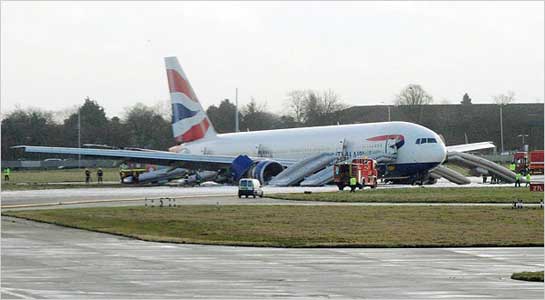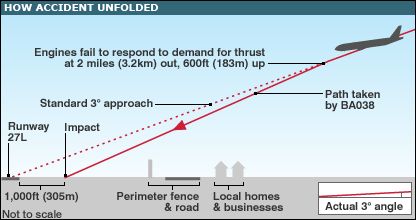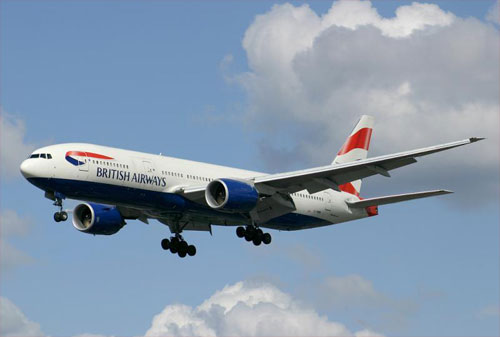British Airways Boeing 777-236ER plane crash
London, United Kingdom

Updated on
 The flight BA38 operated by a Boeing 777 belonging to British Airways took off from Beijing, China, and was due to land at London-Heathrow Airport, uk,
with 136 passengers and 16 crewmembers onboard. The plane landed 1000 ft short of runway 27L at London-Heathrow. It skidded through the grass and came to
rest on the edge of the runway.
The flight BA38 operated by a Boeing 777 belonging to British Airways took off from Beijing, China, and was due to land at London-Heathrow Airport, uk,
with 136 passengers and 16 crewmembers onboard. The plane landed 1000 ft short of runway 27L at London-Heathrow. It skidded through the grass and came to
rest on the edge of the runway.
The left main gear smashed through the wing, while the right hand gear broke off. Two giant wheel units were ripped off. A large section of the port wing
had been ripped up at a 90 degree angle next to the fuselage, while the starboard wing also appeared to have become partially detached.
All passengers evacuated through the emergency slides, and only 18 needed treatments for minor injuries.
The plane was using an instrument landing system (ILS) approach, which allows pilots to follow a set path and be guided in - in this incident towards
runway 27L at Heathrow. The jet was at a height of about 600ft (183 metres) and two miles (3.2 kilometres) from touch down when the engines failed to
respond to a demand for increased thrust from its auto throttle. After continued demands for increased thrust, and with the flight crew moving the throttle
levers, the engines similarly failed to respond. The aircraft speed reduced and the aircraft thus descended below the normal flight path. It was then
impossible to reach the runaway threshold.

The pilots had received no warning that the plane was losing power due to a problem with the aircraft's alarm systems. They did not realise anything was wrong until they noticed that the plane was losing speed more rapidly than normal as it made its descent towards the runway.
The reduction in thrust on both engines was the result of a reduced fuel flow and all engine parameters after the thrust reduction were consistent with this. Parameters recorded indicate that the engine control system detected the reduced fuel flow and commanded the fuel metering valve to open fully. The fuel metering valve responded to this command and opened fully but with no appreciable change in the fuel flow to either engine.
The evidence to date indicates that both engines had low fuel pressure at the inlet to the HP pump. Restrictions in the fuel system between the aircraft fuel tanks and each of the engine HP pumps, resulting in reduced fuel flows, is suspected.



